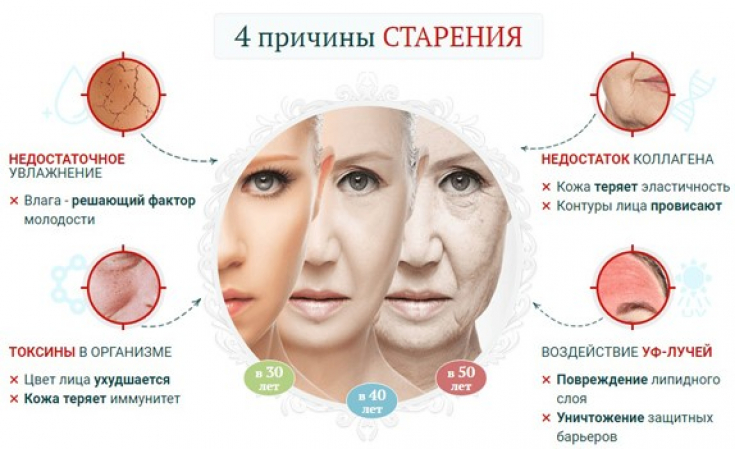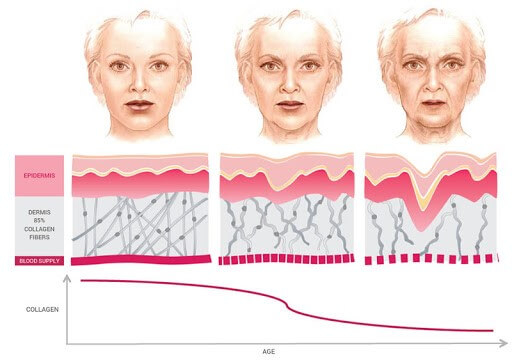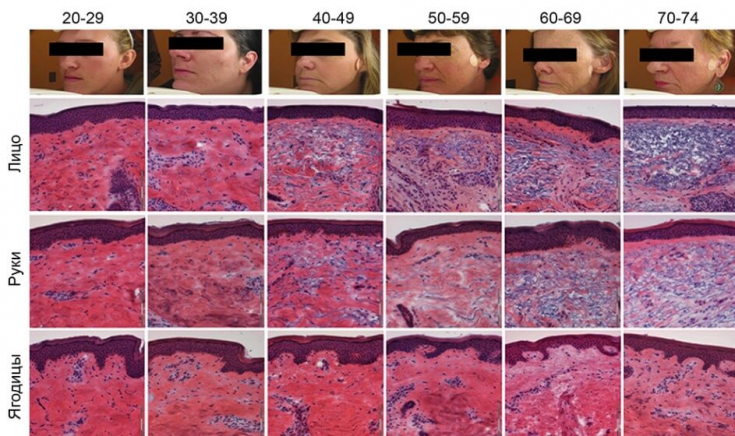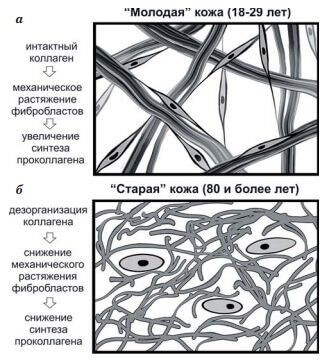While most research on skin changes with age focuses on the undesirable aesthetic aspects of skin aging, skin deterioration with age – it is more than just a cosmetic problem. Although mortality from skin diseases is mostly limited to melanoma, dermatological disorders are ubiquitous in the elderly and have a significant impact on quality of life.
The structural and functional deterioration of the skin that occurs with age has numerous clinical manifestations ranging from benign disorders such as pruritus to more threatening carcinomas and melanomas.
For more information about what happens to aging skin, read on estet-portal.com in this article.
Why skin aging happens
The degenerative changes that occur in aging skin are increasingly being studied at both molecular and cellular levels, leading to a better understanding of structural and functional disorders that cause these changes.
The loss of both functional and structural stability in the skin inevitably occurs with age, which is the result of both internal and external processes that simultaneously contribute to the gradual loss of skin integrity.

Internal aging proceeds at a genetically determined pace, which is primarily caused by the accumulation of damaging products of cellular metabolism, as well as increased biological aging of cells.
Read the most interesting articles in Telegram!
Estrogen levels also strongly influence skin integrity in women; therefore, decreased estrogen secretionof estrogen leads to premature aging of female skin, compared to men of the same age.
What is the risk of skin aging
The skin, which makes up one sixth of the body's weight, is a complex and dynamic organ that acts as a bulwark between the body's sensitive internal tissues and the external environment.
Anatomy and aging of the lips: main features
Leather – it is not just a barrier, it is involved in maintaining body temperature and internal hydration, sensory functions and immunological surveillance.

Under the pressure of external and internal factors, the skin undergoes a progressive structural and functional degeneration that makes it susceptible to a wide variety of unpleasant and possibly even fatal conditions and diseases, including:
- eczema;
- contact and allergic dermatitis;
- seborrheic dermatitis;
- autoimmune diseases with dermatological manifestations;
- seborrheic keratosis;
- various forms of neoplasms such as basal cell and squamous cell carcinoma, malignant melanoma.
ABC of the skin for a cosmetologist: the structure of the epidermis
Most older people have at least at least one treatable dermatological condition, and many have more. They can be serious and significantly affect the quality of life in older patients. As the percentage of older people in the population continues to increase, their dermatological problems are agingin clinical significance.
Morphology of age-related skin changes
Physiological changes during skin aging include:
- structural and biochemical changes;
- Changes in neurosensory perception;
- impaired skin permeability;
- skin reactions to injury;
- reduction in the ability of the skin to recover.
Although the number of cell layers remains stable, the skin gradually thins.
With age, the thickness of the epidermis decreases, especially in women in the face, neck, upper chest, surface of the hands and forearms. Skin thickness decreases on average by about 6.4% per decade, with a corresponding decrease in the number of epidermal cells.

Keratinocytes change shape with age, become shorter and thicker, and corneocytes increase as a result of reduced epidermal turnover. The number of enzymatically active melanocytes decreases with speed 8% to 20% per decade, resulting in uneven pigmentation of the skin of older people.
Danger zones on the face: important information for dermatologists
Although the number of sweat glands does not change, sebum production is reduced by 60%.
With age, there is a decrease in the natural water-fat emulsion on the skin, as well as a decrease in the water content in the stratum corneum. The global lipid content of aged skin is reduced by 65%.

Skin structural changes with age are flattening of the dermo-epidermal junction by more than a third, which occurs as a result of the loss of dermal papillae, as well as a decrease in the interaction between the layers.
The thickness of the dermis decreases with age. Its thinning is accompanied by a decrease in both vascularity and cellularity. Also there is a decrease in the number of mast cells and fibroblasts.
Aging is inevitably associated with a decrease in the turnover of collagen (due to a decrease in the number of fibroblasts and collagen synthesis activity), as well as elastin.
Facial anatomy for beauticians: how to bypass danger zones
The loss of molecular integrity of the dermis leads to increased stiffness, reduced extensibility and elasticity of the skin.
Total body fat generally decreases with age, although body fat increases until about 70 years of age. The distribution of fat also changes; that is, it decreases on the face, arms and legs, while there is a relative increase in fat deposits on the hips, waist and abdomen.
More useful and interesting information on our channel on YouTube:







Add a comment